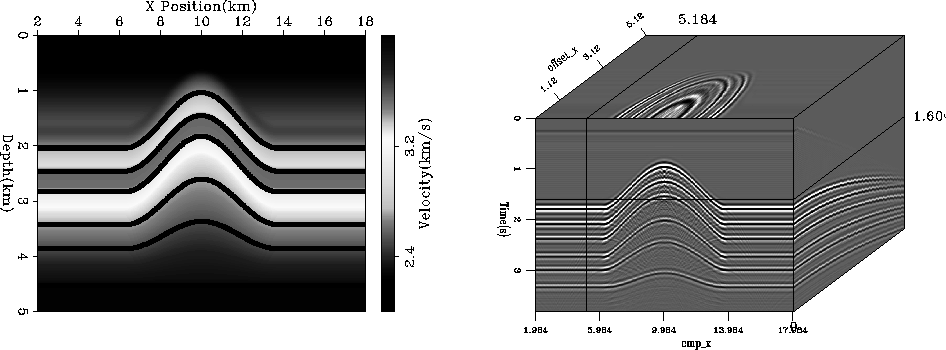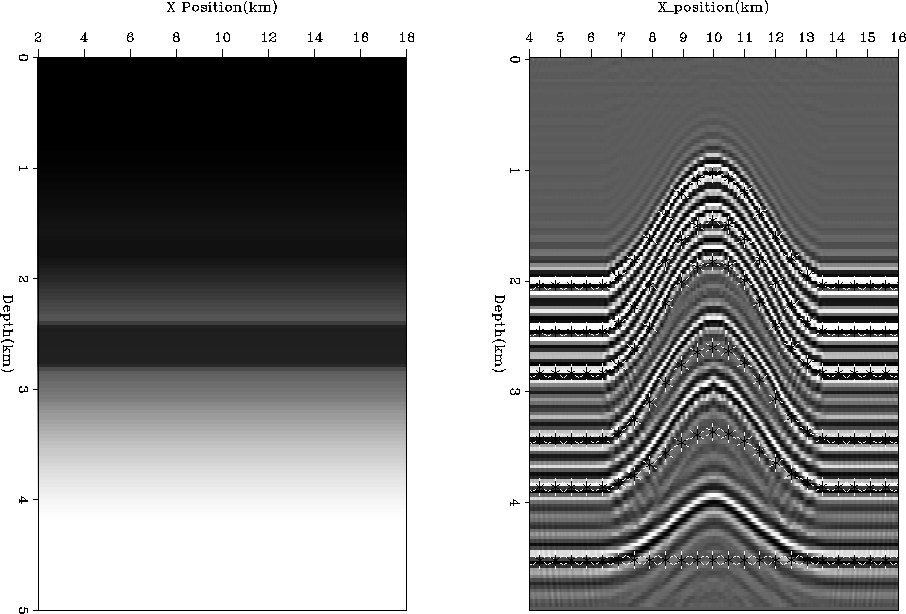




Next: Warping
Up: Tomography
Previous: Tomography
The next step is to see how well our non-stationary filter regularizes
a tomography problem.
I constructed a synthetic anticline model
(Figure 11)
with six reflectors,one above the anticline, four within the anticline, and one flat reflector
representing
basement rock. For added difficulty, there is a low velocity layer
between the second and third reflector.
The model was used to do acoustic wave modeling, with the
resulting dataset having 32 meter CMP spacing and 80 offsets spaced
64 meters apart.If we use as our initial estimation of the
slowness, an s(z) function from outside the anticline,
the reflectors are pulled up
due to using too low a velocity within the anticline (Figure 12).
synth-model
Figure 11 Left panel is the synthetic velocity model with six reflectors spanning the anticline.
The right panel shows the data generated from this model.




 mig0
mig0
Figure 12 Left panel is our initial guess
at the velocity function, the right panel shows the zero offset
ray parameter reflector
position using this migration velocity. The correct reflector
positions are shown as `*'. Note that reflectors are
significantly mispositioned.





Following the methodology of Clapp and Biondi (1999) we will
begin by considering a regularized tomography problem.
We will linearize around an initial slowness estimate and find
a linear operator in the vertical
traveltime domain  between our change in slowness
between our change in slowness  and our change in traveltimes
and our change in traveltimes  .We will write a set of fitting goals,
.We will write a set of fitting goals,
|  |
|
| (5) |
where ( ) is our steering filter operator.
) is our steering filter operator.
However, these
fitting goals don't accurately describe what
we really want. Our steering filters are based on our
desired slowness rather than change of slowness. With this
fact in mind, we can rewrite our second fitting goal as:
|  |
(6) |
| (7) |
Our second fitting goal cannot be strictly defined as regularization
but we can do a preconditioning substitution:
|  |
|
| (8) |





Next: Warping
Up: Tomography
Previous: Tomography
Stanford Exploration Project
4/28/2000



![]() between our change in slowness
between our change in slowness ![]() and our change in traveltimes
and our change in traveltimes ![]() .We will write a set of fitting goals,
.We will write a set of fitting goals,